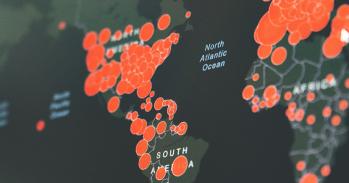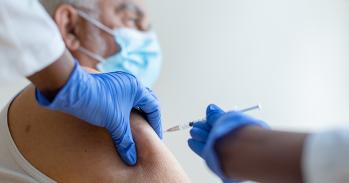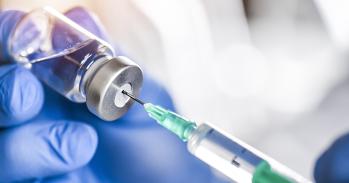
Cambridge University researchers, funded by the BBSRC, have shed new light on a common food poisoning bug.
Cambridge University researchers, funded by the BBSRC, have shed new light on a common food poisoning bug.
Understanding how these bacteria invade, survive, proliferate and kill vital macrophage cells provides a wealth of knowledge to help improve our health.
Dr Clare Bryant
Using real-time video microscopy, coupled with mathematical modelling, scientists have changed our assumptions about Salmonella and how it infects human cells. The research was published in Interface.
Salmonella is an important bacterium to study as it causes a range of diseases in humans and animals. It is capable of growing and reproducing inside macrophages - a type of white blood cell that ingests foreign material - ultimately destroying them. These macrophage cells are key players in the immune response to invaders and so the control of Salmonella within these cells is critical to surviving an infection. However, fundamentally important factors in infection events - such as the rate at which Salmonella infects cells, how frequently this occurs and the probability of infection - had not previously been calculated because it was thought impossible to do so.
Dr Clare Bryant, from the University of Cambridge's Department of Veterinary Medicine, said: “Understanding how these bacteria invade, survive, proliferate and kill vital macrophage cells provides a wealth of knowledge to help improve our health. For the first time, we have been able to calculate the rate at which Salmonella can infect macrophages and we have also seen evidence of dual infection and reinfection of a single cell.”
Instead of relying on figures from large populations of infected cells, such as changes in total bacterial number over time, finer measurements of the individual steps of infection were considered. The researchers used two independent approaches for their calculations: mathematical modelling of Salmonella infection experiments, and analysis of real-time video microscopy of individual infection events.
Their research found that many incorrect assumptions had been made about Salmonella infection, particularly that macrophages are highly susceptible to infection. Their data showed that infection occurrences after initial contact between a bacterium and macrophage were low. The probability of that bacterium infecting the cell is less than 5 per cent. However, they also showed that an infected macrophage can be reinfected by a second bacterium. The concept of reinfection by Salmonella had not been considered before and this previously overlooked mechanism may make an important contribution to total bacterial numbers in infection studies.
The study also highlighted the fact that some cells are far more susceptible to infection than others. Rather than grouping all macrophages together in terms of their susceptibility to infection, the research shows that there is a spectrum of susceptibility.
“Our research revealed novel biological processes that occur when Salmonella interacts with macrophages. It will lead to a reconsideration of the mechanisms behind infection which will be important for the future development of intervention strategies,” added Dr Bryant.
This work is licensed under a Creative Commons Licence. If you use this content on your site please link back to this page.





